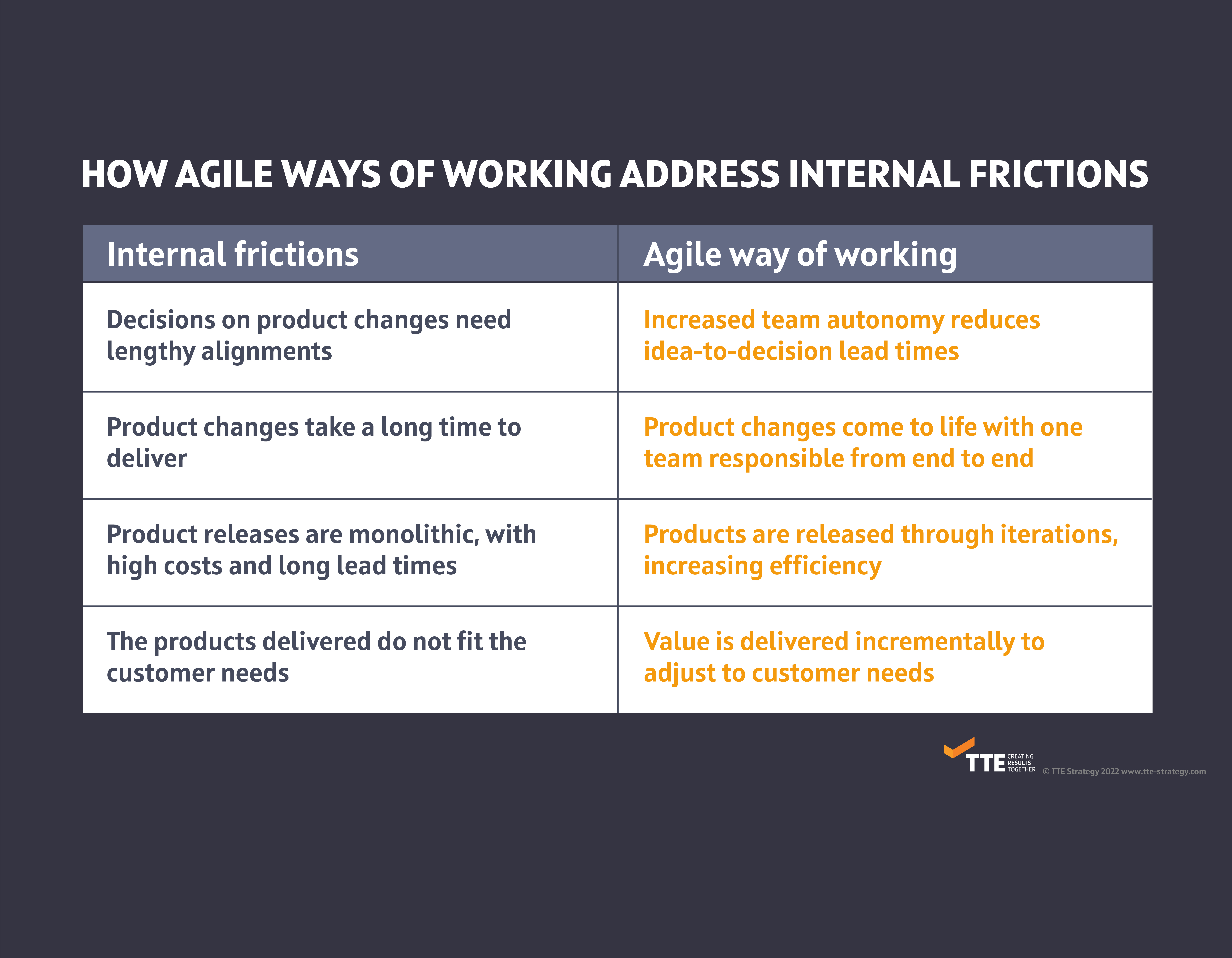
Financial institutions nowadays face an unprecedented array of challenges that have to be acted upon. The accelerating pace of disruption raises the importance of timely adaption for sustainable competitivity, while internal processes prove to be a source of friction: protracted alignment cycles, long delivery deadlines, and monolithic product releases. To overcome these speed bumps, financial institutions have started turning towards agile ways of working.
The accelerating pace of disruption raises the importance of timely adaption
The financial services sector is witnessing a period of disruption and transformation. The environment in which financial institutions operate is being shaped by the remnants of a pandemic, an active war, shifting business cycles, evolving regulations, and a changing competitive landscape. New players have rejuvenated the market, with a fifth of market players being less than 15 years old1, and revenue is leaking from the banking sector into other industries like big tech.
On the customer side, behaviors are changing, with accelerated use of digital channels. In 2022, 50% of customers interacted with their banks through apps or websites1, which at the same time raises cybersecurity concerns.
This revolution in the operating environment calls for quick and effective response to change. Financial institutions must be able to react rapidly when an opportunity arises, without compromising on quality or compliance.
Internal frictions hinder the response to fast-changing needs
As customers become savvier, it is imperative to deliver seamless, personalized experiences that fit clients’ needs and circumstances. However, several organizational constraints are in the way.
The presence of silos and multiple management layers results in lengthy alignments and balancing of competing targets. This is also reflected in the lack of end-to-end collaboration between stages of product development and commercialization, which results in long pipelines where the customer focus gets lost.
Beyond the organizational structures, monolithic releases are developed down to the last detail before release, resulting in long lists of requirements that need time and resources to be implemented. This one-time delivery often lacks customer focus, likely leading to the release of products that do not fit the needs of the customer.
In order to respond to the changing ecosystem in a timely manner that addresses customer needs, financial institutions need an enterprise-wide approach that moves from a siloed, process-centric organization towards one that is agile and collaborative in nature.
How adopting agile ways of working can drive real business value
Agility is known to support organizations in quickly adapting to changing market conditions and customer needs. In this world of uncertainty, this can become a key differentiator.
What is agility?
For us, agility goes beyond a project management methodology; it is a culture change that, together with the right toolset, allows individuals to work autonomously, sourcing knowledge cross-functionally, to quickly deliver solutions that incrementally address customer needs.
[1] Accenture Global Banking Outlook 2021.
How does agility smoothen internal frictions to enable quick and effective response to change?

Table: How agile ways of working address internal frictions
When faced with a challenge or disruption, agile teams are able to quickly adjust their priorities and focus their efforts on the most important issues at hand. The ability to quickly deliver value and then get feedback from customers is key to better meeting customer needs, and thus key to sustainable competitivity in the face of continuous change.
The path towards agility
The implementation of agile ways of working in business areas such as software development or research and development, or even aiming for a company-wide agile transformation, is a challenging task where one-size-fits-all approaches fall short. Working closely with our team at TTE Strategy, you are guided through the adoption of agile ways of working and address the hurdles of the transformation based on our extensive experience. Let us tailor an agile transformation that addresses your current business challenges, aligns with your strategic objectives, and enhances your agile maturity.
Do you want to stay ahead of the industry disruption?
Then bring us on board – we will pursue the right course together.


TTE Strategy